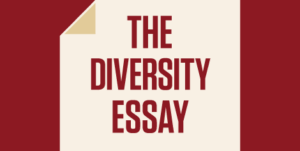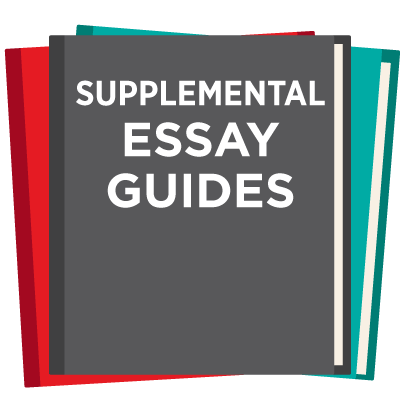Our Supplemental Essay Guide is an excellent resource.
How to Write a Compelling Diversity Essay | College Essay Advisors
 Colleges ask for diversity supplemental essays because they are looking to both enrich the campus environment with varied perspectives and get a better sense of how you will interact with students who differ from you. In this way, the diversity essay is an opportunity to talk about your background while also acknowledging your role as a community member who values inclusivity.
Colleges ask for diversity supplemental essays because they are looking to both enrich the campus environment with varied perspectives and get a better sense of how you will interact with students who differ from you. In this way, the diversity essay is an opportunity to talk about your background while also acknowledging your role as a community member who values inclusivity.
Understanding the Importance of the Diversity Essay
While diversity essay prompts can take many forms, questions typically fall into two categories: how your identity/background/perspective has affected you and/or others, and how you have been affected by another identity/background/perspective. Of course, there is often overlap between the two. In talking about how your own individual experience will contribute to a diverse classroom, you are most likely acknowledging the ways in which you have learned from others; and in discussing how you developed a new perspective through interacting with another person, you are acknowledging your upbringing and belief system. In both examples, the concept of community is integral to your answer. You’ll also notice in the prompts below that admissions is often looking for a mixture of past and future, meaning they are interested in hearing how your prior lived experiences will influence your participation on campus.
There is also a more specific diversity essay question that asks you to reflect on a particular instance or conversation that changed you. We have listed those prompts under a separate header we refer to as “Moment in Time Diversity Essay.” Note that the questions listed under the Standard Diversity Essay category are geared toward broader reflection, not necessarily rooted in a pivotal moment.
Standard Diversity Essay Prompt Examples
The Standard Diversity Essay might ask you to reflect on your identity, discuss how your identity will enable you to contribute on campus, or even talk about a combination of both—but what these prompts have in common is a focus on a larger period of your life versus a specific inciting moment of change. You might choose to reference a pivotal moment that shaped your perspective, but the thrust of the question isn’t about an exact time or singular experience. Let’s take a look at some examples:
Endicott College is committed to fostering an environment that honors all individuals. We celebrate diversity and hold it as our responsibility to move our community toward becoming a stronger reflection of our interconnected world. If you desire, please share how elements of your background, identity or interest(s) have influenced your individual experience. (No word count)
Diversity of all kinds is important to enriching the educational experience at Howard University. Please share with us anything in your background or lived experience that has shaped your perspectives and how that would contribute to the classroom and community at Howard. (500 words max)
TCU is committed to creating an inclusive campus culture for all people. We have a shared responsibility to enhance our community by encouraging inclusive environments through learning opportunities related to diversity, equity, and inclusion. Describe how you have already contributed to creating an inclusive environment in your community or how you plan to contribute to an inclusive college environment in the future. (Maximum length: 200 words)
The University [of Minnesota Twin Cities] values diversity, broadly defined to include diversity of experiences, perspectives, backgrounds, and talents. Enrolling a diverse community of scholars interested in learning with and from each other fosters discussion and discovery inside and outside of the classroom. Please share briefly how you might contribute to, or benefit from, our community of scholars. (150 words)
Moment in Time Diversity Essay Prompt Examples
The Moment in Time Diversity Essay primes students to tell a story that involves an encounter with another person—specifically, one rooted in a moment of transformation. Language indicators of this type of essay include the phrases “an instance,” “a moment,” “an experience,” or “a time when.” You will still talk about your perspective and identity, but within the context of a pivotal conversation or experience. Let’s take a look at some examples:
Barnard: In college, you will encounter others with diverse viewpoints and experiences. Describe an instance where you engaged with someone who held a different opinion and explain how it shaped your perspective on the issue. (150 Words)
Dartmouth Prompt Option: The social and family interactions of wild chimpanzees have been the focus of Dame Jane Goodall’s research for decades. Her understanding of animal behavior prompted the English primatologist to see a lesson for human communities as well: “Change happens by listening and then starting a dialogue with the people who are doing something you don’t believe is right.” Channel Dame Goodall: Tell us about a moment when you engaged in a difficult conversation or encountered someone with an opinion or perspective that was different from your own. How did you find common ground?
At Fordham, we expect students to care for and engage with their communities and be active citizens for positive change. Please share an experience you had that caused you to develop a new perspective, change your point of view, and/or empower you to take an action or be courageous. Your response should include examples of your personal growth (e.g., what did you learn, did your point of view change, did you develop new skills or strengths?).
At Lewis & Clark, we strive to be an inclusive community in which students benefit from exchanging ideas with people whose perspectives may differ from their own. Reflect on a time when you engaged with someone whose background or life experiences are different from yours and share with us what you learned from that experience.
The George Washington University encourages students to think critically and to challenge the status quo. Thus, civil discourse is a key characteristic of our community. Describe a time when you engaged others in meaningful dialogue around an issue that was important to you. Did this exchange create change, new perspectives, or deeper relationships?
How to Write a Strong Diversity Essay
The first step, as always, is to carefully read the prompt to determine what the question is asking. Are you meant to be reflecting on the gradual development of your identity or discussing a singular transformative moment? Is the question more centered on how you have already contributed or how you will contribute? Additionally, it’s important to pay attention to those little conjunctions “and” and “or.” If the prompt includes the latter, it may be to your advantage to focus on one aspect of diversity as opposed to trying to cover multiple aspects in limited word count.
Next, you’ll want to brainstorm your unique experiences and perspectives in order to choose the most impactful angle. Outlining and drafting your essay should only occur after you’re certain of your topic and approach. Remember: the goal is to showcase personal growth and understanding. You also might want to consider researching and incorporating a college’s diversity initiatives into your essay to demonstrate that they align with your values, but make sure your message still comes from the heart by not merely parroting their language back to them.
Different Types of Diversity You Can Write About
What constitutes diversity is, well, diverse. Here are just a few of the types of identities or backgrounds students might choose to write about:
- Race and ethnicity
- Socioeconomics
- Culture
- Gender and sexual orientation
- Neurodiversity
- Religion or belief systems
- Geography or a unique native locale
Key Components of a Strong Diversity Essay
The key components of a strong Diversity Essay are:
- Authenticity
- Specific examples and anecdotes
- Reflection on personal growth
- Connection to the college’s values
- Demonstrating cultural competence
- Openness to those who differ from you
A strong diversity essay will use specific examples and anecdotes to reflect on identity, personal growth, and contribution. It will demonstrate cultural competency in an authentic way, avoiding gimmicks, cliché, and saccharine language. It might choose to directly reference the college’s values, but even if it doesn’t, the essay will make clear its alignment with equity and inclusion.
Dos and Don’ts of Diversity Essays
Do:
- Think about your unique identity or perspective in action, not just as a static trait
- Convey who you are now as an indicator of who you will be as a college student
- Use storytelling—even briefly—to ground the reader in specifics
Don’t:
- Parrot back canned language that feels divorced from your experiences
- Confuse this essay with a community prompt by focusing too heavily on volunteering or outreach
- Conflate “diversity” with “adversity”
Common Mistakes to Avoid in Diversity Essays
Sometimes students will overreach in an attempt to generate a more interesting background, and in doing so, will sacrifice sincerity and specificity. It’s much better to write in a concrete way about how competitive chess has shaped your thinking than to reflect vaguely on your great-grandfather’s Irish citizenship. Additionally, make sure in discussing identity and diversity that you focus more on resiliency than hardship. Admissions will want to get a sense that you are fired up to collaborate rather than dwell on the hand dealt to you.
How to Recycle Your Diversity Essays
It’s easier to cut than expand, so if you’re looking to recycle language from your diversity essays for multiple colleges, start by writing the one with the highest word count and then trimming and adjusting for prompts with reduced word counts. You also need to make sure that the prompts are asking the same thing; just because “diversity” appears in the question doesn’t mean you can automatically repurpose an essay. If you plug in writing without paying attention to the exact language of a prompt, admissions will either pick up on the repurposing or think you can’t follow directions.
How to Demonstrate Your Commitment to Diversity, Equity, and Inclusion Beyond Your Personal Experiences
The nature of college essays is to communicate personal experience, but with the diversity essay, you can also make clear your respect for differences by stating your values more directly. While admissions is not looking for a dry and formal summary on your beliefs in DEI, you might reference your support of groups and perspectives outside of your daily encounters. Again, mentioning the language of a college’s diversity statement is another way to connect your individual narrative to a larger conversation.
How CEA Can Help You Craft Your Diversity Essay
Many students panic at diversity prompts because they don’t think they have anything in their background or lived experience that counts or is “interesting.” We’re here to help you discover what makes your perspective unique, whether it’s an unusual way of thinking (you don’t see pictures in your head!) or your reliance on public transportation (you’ve commuted every day on the subway for eight years!). Even if you already have a topic in mind, we offer guidance on how to structure, revise, and polish your essay. Fill out a contact form below to reserve your spot on our roster!
"Thank you so much for your focus and your insightful work with my son! I could tell he relaxed as soon as he knew you were in his corner. I'm elated to inform you that the hard work paid off -- he was accepted ED to Dartmouth yesterday. Many thanks!"
– CEA Parent, Dartmouth, Class of 2024
"My daughter got into Barnard College! She is very happy and excited. Thank you for all the inspiration and guidance. You are the greatest writing teacher ever!"
– CEA Parent, Barnard, Class of 2026
Frequently Asked Questions
Yes, and not just because you have to! Diversity takes many forms, including experience, and does not inherently refer to hardships. Maybe your parents are both musicians, and so from a young age, you understood what it meant to be an attentive audience member and actively listen. Everyone can write a diversity essay regardless of their background.
Aside from our recommendation to avoid clichés (“there is no ‘I’ in teamwork”), we suggest you focus on authenticity in your approach. Rather than sound like a mission statement, use personal examples and detailed stories to convey your message about identity and community contribution.
First, you’ll want to check the language of the prompt to see if it specifies more than one aspect of diversity. If it doesn’t, then our recommendation is to write about what best showcases your unique background or commitment to inclusion; for some students, this will be a deep dive into one aspect of diversity, while for others, it will touch on multiple areas.
There is only one you, which means your unique voice paired with specific lived examples is the first step toward standing out from other applicants. Even if your topic is more common, a strong opening or hook and unique perspective will set you apart from the pack.










